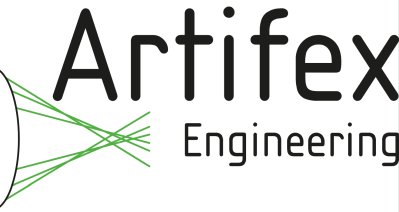optical power monitors (original) (raw)
Definition: devices for monitoring optical powers in free-space light beams or in optical fibers
Categories:  fiber optics and waveguides,
fiber optics and waveguides,  photonic devices,
photonic devices,  light detection and characterization,
light detection and characterization,  optical metrology
optical metrology
- optical metrology
- autocollimators
- beam profilers
- colorimeters
- colorimetry
- frequency metrology
- laser beam characterization
- optical energy meters
- optical frequency standards
- optical power meters
- optical power monitors
- optical profilometers
- optical spectrum analyzers
- optical time-domain reflectometers
- powermeters
- photometry
- polarimeters
- refractometers
- spectrographs
- spectrometers
- spectrophotometers
- wavemeters
- (more topics)
Related: optical poweroptical power metersphotodetectorsoptical fiber communications
Page views in 12 months: 142
DOI: 10.61835/t9w Cite the article: BibTex BibLaTex plain textHTML Link to this page! LinkedIn
Content quality and neutrality are maintained according to our editorial policy.
📦 For purchasing optical power monitors, use the RP Photonics Buyer's Guide — an expert-curated directory for finding all relevant suppliers, which also offers advanced purchasing assistance.
Contents
What are Optical Power Monitors?
Free-space Optical Power Monitors
What is an optical power monitor?
How can you monitor the power of a light beam while still using it?
What is a fiber-optic in-line power monitor?
For what purpose are power monitors used in fiber amplifiers?
Are in-line fiber power monitors sensitive to the direction of light?
Summary:
This article explains what optical power monitors are, distinguishing them from optical power meters by their typical use for continuous, long-term monitoring. It describes the two main types: free-space monitors, often used with a beam splitter, and fiber-optic monitors, which are frequently used as in-line devices in systems for optical fiber communications or with fiber lasers.
(This summary was generated with AI based on the article content and has been reviewed by the article’s author.)
What are Optical Power Monitors?
Optical power monitors are devices which can be used for monitoring optical powers. In contrast to optical power meters, they are often used for long-term monitoring during normal operation rather than only during short tests. They are therefore often permanently integrated into some systems, e.g. in laser devices and in systems for optical fiber communications. Also, they are often used such that the monitored light beam can still be used for its actual purpose.
Optical power monitors should not be confused with optical channel monitors, which can measure the optical powers of separate wavelength channels of a wavelength division multiplexing system.
Free-space Optical Power Monitors
Devices for monitoring free-space light beams are in principle similar to many laboratory power meters, e.g. consisting of a measurement head containing a photodiode (or other kind of photodetector) and an electronic device which may contain a display and/or connections for the electronics. In addition to the measurement head, some optical filters may be supplied, which can be used e.g. for extending the measurement range to higher powers and/or for suppressing unwanted influences of some wavelength components. There are also adapters for use in conjunction with an optical fiber.
The measurement head is usually not supplied with a universal mount, since such devices are often used as OEM parts for integration into other devices, where the integrator will design a mount which is suitable for the particular purpose. In many cases, the measurement head will be mounted together with a beam splitter which directs only some fraction of the power of the monitored beam onto the photodetector, so that most of the light can be used for the actual purpose.
The electronic part is usually simple to use. It just needs to be supplied with some voltage (often a DC voltage of 12 V, for example, or 5 V via a USB connector) and perform some useful functions like digitizing the analog signal from the measurement head and applying wavelength-dependent calibration factors. Such devices can have different electronic interfaces, which can be analog or digital. For example, some have an USB interface for connection to a computer; some software is then usually supplied, which can e.g. display the current power and also power values recorded over some time interval. Such software may also process data from multiple power monitors and may then also display power differences or ratios, for example. If the registered power leaves a certain predefined range, the software can create an alarm.
In other cases, the electronic part of the power monitor itself contains a data logger which records the power values over some time interval. These data can then be retrieved e.g. if an anomaly of the system has been detected.
Fiber-optic Power Monitors
Optical power monitors are often used in conjunction with fiber-optic systems, e.g. in the context of optical fiber communications. For example, such a device can monitor the average output power of an erbium-doped fiber amplifier (EDFA), and a feedback system may automatically stabilize the output power by adjusting the drive current of the pump diodes of the fiber amplifier. That way, influences of aging pump diodes or varying input power levels can be compensated, and defects can be recognized. Some devices have a quite large measurement bandwidth, so that they are suitable not only for monitoring average powers, but even for retrieving data signals; there may be different bandwidth settings, e.g. a “slow” and “fast” detection mode.
A common form of fiber-optic power monitor is a small hermetically sealed in-line monitor with a fiber input and output. The fibers may be single-mode fibers, e.g. standard fibers like Corning SMF-28e, mounted on opposite sides or on the same side of the device. Such a device may contain a fiber coupler which splits off some small fraction of the power and directs it to a photodiode. Therefore, the device may cause only a small optical insertion loss (typically far below 1 dB) and very high return loss (e.g. > 50 dB). Polarization-dependent loss (PDL) is also usually quite small. Because the actual measurement is done using only a small part of the power extracted with an integrated tap, such monitors are also called integrated tap monitors. A display may be integrated into the device itself or connected with some electrical cable.
Due to the directional nature of the usual fiber couplers, such an in-line power monitor will often be sensitive only to light propagating in a certain direction, while light sent into the output port will be transmitted to the input port (with the same insertion loss) but not detected. It is therefore important not to confuse input and output ports.
There are also devices without directionality — particularly those where the two fibers are on the same side. Here, the light may internally be coupled out of a fiber, focused onto a dielectric mirror with non-normal incidence, and the reflected light (carrying most of the optical power) is focused back into the other fiber. The small fraction of power transmitted through the dielectric mirror hits the monitor photodiode.
Some devices have a larger number of fiber inputs and outputs, e.g. for monitoring multiple channels in a WDM system. Fiber-optic power monitors are also available with multimode fibers, e.g. for use in short-distance data transmission systems.
In-line power monitors may be permanently integrated into fiber-optic systems, but can also be temporarily used, ideally with fiber connectors.
In the simplest case, a device always displays the currently measured optical power — for example, in milliwatts or in dBm. Some devices can be switched to relative power display — after storing some reference power, the deviation of the current power from the reference power can be displayed in percent or in decibels. There may be also an integrated data logger for retrieving power values recorded at earlier times.
Frequently Asked Questions
This FAQ section was generated with AI based on the article content and has been reviewed by the article’s author (RP).
What is an optical power monitor?
An optical power monitor is a device used for the continuous, long-term monitoring of optical power levels. Unlike an optical power meter used for short tests, a monitor is often permanently integrated into a system like a laser or a fiber-optic link.
How can you monitor the power of a light beam while still using it?
For free-space beams, a beam splitter can direct a small fraction of the beam's power to the monitor's photodetector, allowing the main part of the beam to be used for its intended purpose. Fiber-optic monitors use a similar principle with an integrated tap.
What is a fiber-optic in-line power monitor?
It is a compact device with fiber input and output ports that is inserted directly into a fiber-optic path. It typically uses an integrated fiber coupler to tap off a small fraction of the light for power measurement, causing only a minimal signal loss.
For what purpose are power monitors used in fiber amplifiers?
They can monitor the output power of a fiber amplifier. A feedback system can then use this signal to stabilize the output power, for example by adjusting the current of the pump diodes, thus compensating for aging effects or varying input levels.
Are in-line fiber power monitors sensitive to the direction of light?
Often, yes. Many models use directional fiber couplers, making them sensitive to light propagating in only one direction. It is therefore important to connect the input and output fibers correctly.
Suppliers
Sponsored content: The RP Photonics Buyer's Guide contains 19 suppliers for optical power monitors. Among them:
⚙ hardware
Quantifi Photonics offers a range of optical power meters in compact benchtop, PXI and rackmountable form factors for versatile, high-channel density fibre optic power monitoring from −60 to +10 dBm across 750 — 1700 nm wavelengths. Ideal for fiber optic manufacturing test, silicon photonics development and manufacturing, automated test systems, and as general R&D and production environment tools.
⚙ hardware
Artifex OPM Series optical power meters use photodiodes as well as integrating spheres to measure and monitor optical power from UV to near IR. Our optical power meters are designed for fast response with a high signal to noise ratio. We offer a wide range of wavelengths (400-1600nm) and powers (nW-kW) and a variety of options in photodiode material and optical input. Visit our product page for more information about our OPM series. We look forward to your inquiry.
Questions and Comments from Users
Here you can submit questions and comments. As far as they get accepted by the author, they will appear above this paragraph together with the author’s answer. The author will decide on acceptance based on certain criteria. Essentially, the issue must be of sufficiently broad interest.
Please do not enter personal data here. (See also our privacy declaration.) If you wish to receive personal feedback or consultancy from the author, please contact him, e.g. via e-mail.
By submitting the information, you give your consent to the potential publication of your inputs on our website according to our rules. (If you later retract your consent, we will delete those inputs.) As your inputs are first reviewed by the author, they may be published with some delay.



